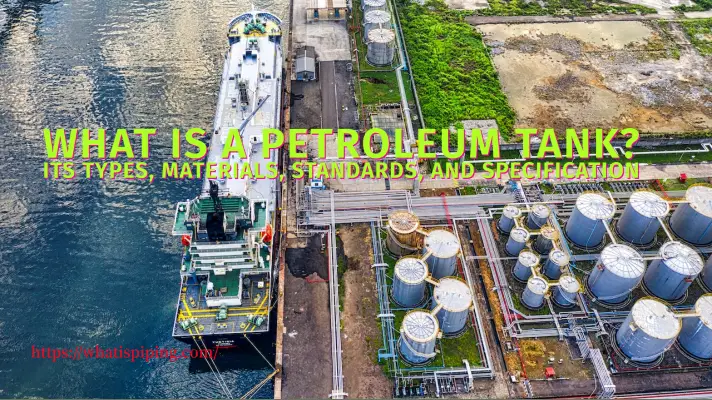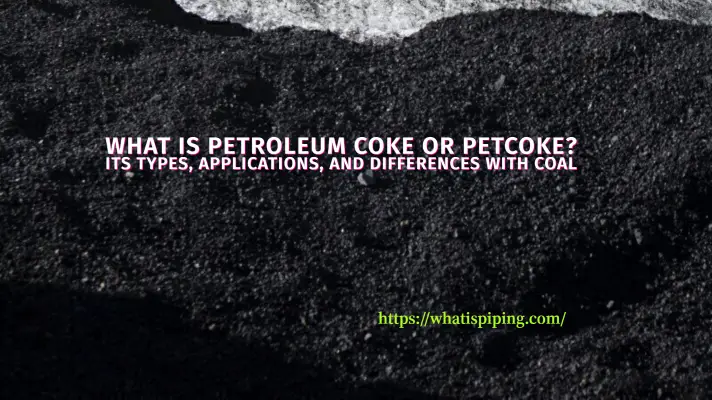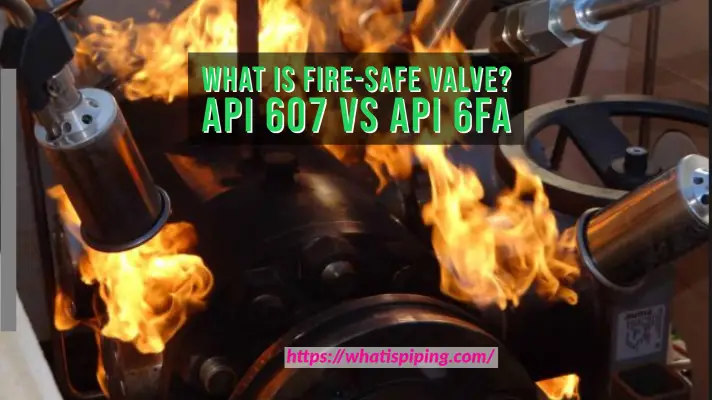In the world of petroleum products and chemicals, safety is of paramount importance. Whether it’s gasoline, diesel, jet fuel, or other refined products, understanding and managing their unique properties is essential to prevent accidents and ensure safe handling and transportation. One crucial characteristic that plays a vital role in assessing the safety of these products is the “Flash Point.” In this article, we will learn the significance, measurement, and examples of the flash point for petroleum products and why it matters for industries and consumers alike.
What is Flash Point?
The flash point of a product is the lowest temperature at which it emits sufficient vapors to form an ignitable mixture with air near its surface. In simpler terms, it is the temperature at which the product can catch fire if exposed to an open flame or spark. Understanding the flash point is crucial because it provides insight into the product’s volatility and flammability, making it a key factor in assessing potential fire hazards and risks during storage, transportation, and usage.
A substance with a low flash-point is highly flammable and a product with a high flashpoint is less flammable.
Significance of Flash Point in Safety
- Storage and Transportation: Petroleum products are commonly stored in large quantities in tanks and transported via pipelines, ships, and trucks. Knowing the flash point helps operators design appropriate storage facilities and select suitable transportation methods to minimize the risk of fires and explosions during handling.
- Fire Prevention: Flashpoint data aids in establishing fire safety protocols and determining the appropriate fire-fighting methods. When working with highly flammable products, it is essential to have specialized equipment and trained personnel to handle potential emergencies safely and efficiently.
- Occupational Safety: Workers in the petroleum industry, such as refinery operators and tanker drivers, face potential exposure to hazardous vapors. Knowledge of the flash point enables companies to implement proper safety measures, including personal protective equipment (PPE) and ventilation systems, to protect employees from accidents.
- Hazardous Material Handling: In emergency response situations, first responders need to know the flash point of spilled petroleum products to assess the severity of the incident and employ appropriate containment and cleanup procedures.
- Quality Control: Flash point testing is often used to determine contamination or adulteration in chemical and petroleum industries. Changes in flash points clearly indicate that the substance is adulterated.
Classification of Flammability of a Substance based on Flash Point
Depending on flash points petroleum and chemicals are classified into two main categories:
- Extremely flammable product: Flash point below 0° C
- Highly flammable product: Flash point below 21 °C
- Flammable product: Flash point below 55 °C
Measuring Flash Point
Measuring the flash point of a substance is a critical safety assessment, especially for flammable liquids and volatile chemicals. There are several methods to determine the flash point, but two common techniques are the “Closed Cup” method and the “Open Cup” method. Below, I’ll outline both methods:
Closed Cup Method:
This method involves using a closed container to prevent the escape of vapors during the test. There are different apparatus available for the closed cup method, such as the Pensky-Martens and Abel flash point testers. Here’s a general procedure:
Step 1: Equipment Setup
- Ensure the flash point apparatus is clean and dry.
- Calibrate the apparatus using a known standard with a well-documented flash point.
Step 2: Sample Preparation
- Fill the sample cup with a sufficient amount of the substance (usually around 30-100 ml).
- Place the sample cup on the heating plate inside the closed cup apparatus.
Step 3: Test Procedure
- Gradually heat the sample at a controlled rate (usually around 5°C per minute).
- Periodically introduce a flame or spark near the cup opening to check for ignition of vapors. This is done using a pilot flame or an electric spark.
Step 4: Flash Point Determination
The flash point is the lowest temperature at which the sample’s vapors ignite momentarily when exposed to the flame or spark.
Open Cup Method:
This method involves using an open container, which allows vapors to escape freely during the test. The Cleveland Open Cup (COC) method and the Tag Open Cup (TOC) method are common approaches. Here’s a general procedure:
Step 1: Equipment Setup
- Ensure the open cup apparatus is clean and dry.
- Calibrate the apparatus using a known standard with a well-documented flash point.
Step 2: Sample Preparation
- Fill the sample cup with enough substance to cover the bulb of the thermometer (usually around 70-100 ml).
Step 3: Test Procedure
- Place the sample cup in the open cup apparatus.
- Gradually heat the sample at a controlled rate (usually around 5°C per minute).
- Use a suitable ignition source (usually a manual gas flame) to check for ignition of vapors at regular temperature intervals.
Step 4: Determination of Flash Point
The flash point is the lowest temperature at which the sample’s vapors ignite momentarily when exposed to the ignition source.
Safety Precautions during Flash Point Measurement:
- Always conduct flash point testing in a well-ventilated area, preferably in a designated laboratory with proper safety equipment.
- Take necessary precautions to prevent any accidental fires during the test.
- Follow the specific instructions provided by the flash point apparatus manufacturer.
Keep in mind that the flash point measurement can be influenced by factors like atmospheric pressure, sample volume, and the type of apparatus used. Therefore, it’s essential to follow standardized testing procedures and compare results obtained with established safety data for the substance in question.
Examples of Flash Point
Flashpoint is a critical property for various substances, especially those that are flammable or volatile. It is important to note that the flash point can vary significantly among different petroleum products. For instance, gasoline typically has a lower flash point compared to diesel fuel or lubricating oils. This variation highlights the need to understand the specific characteristics of each product and apply appropriate safety measures accordingly.
Here are some examples of substances and their flash points:
Flash Point of Gasoline:
Gasoline is a commonly used fuel for automobiles and has a flash point of approximately -40°C to -45°C (-40°F to -49°F). Due to its low flash point, it is highly flammable and requires proper handling and storage precautions.
Flash Point of Diesel Fuel:
Diesel fuel, used in diesel engines, has a higher flash point compared to gasoline. Its flash point typically ranges from 52°C to 96°C (125°F to 205°F), making it less flammable than gasoline.
Flash Point of Ethanol:
Ethanol, a renewable biofuel, has a flash point of about 13°C to 16°C (55°F to 61°F). It is used as an alternative fuel in some vehicles and is also used in various industrial applications.
Flash Point of Methanol:
Methanol, a volatile alcohol, has a flash point of approximately 11°C to 12°C (52°F to 54°F). It is used as an industrial solvent and in the production of various chemicals.
Flash Point of Acetone:
Acetone, a common solvent, has a flash point of -20°C (-4°F). It is widely used in laboratories, nail polish removers, and industrial applications.
Flash Point of Cooking Oils:
Various cooking oils, such as vegetable oil and olive oil, have flash points ranging from around 200°C to 315°C (392°F to 599°F). These oils are not as flammable as gasoline but can still present fire hazards if heated to high temperatures.
Flash Point of Propane:
Propane, a common liquefied petroleum gas (LPG) used for heating and cooking, has a flash point of approximately -104°C (-155°F). It is highly flammable and requires careful handling and storage.
Flash Point of Aviation Fuel (Jet Fuel):
Jet fuel, used in aviation, has a flash point typically between -22°C to 38°C (-8°F to 100°F), depending on its grade. The flash point allows it to vaporize quickly for efficient combustion in jet engines. The following table provides flashpoints of some more liquids:
| Name of Chemical/Petroleum Product | Flash Point (°C) |
| White Gas (Coleman Fuel) | -4 |
| Kerosene | >38 |
| Benzene | -12 |
| Lube Oil | 187 |
Regulatory Compliance
Various government agencies and international organizations set regulations and guidelines for handling and transporting hazardous materials, including petroleum products. Flash point data is a crucial parameter used in these regulations to categorize products into different hazard classes. Complying with these regulations ensures the safety of workers, the public, and the environment.
Conclusion
The flash point of petroleum products serves as a fundamental safety parameter for industries and consumers dealing with these volatile substances. Understanding the flash point helps prevent accidents, protects workers, and ensures the safe handling and transportation of these essential commodities. As the petroleum industry continues to evolve, maintaining a strong focus on safety and adhering to regulatory guidelines remains imperative to prevent potential disasters and create a secure working environment for all involved.








